
India has huge potential for growth. But having the potential and actually achieving it are two different things. And this is where the biggest challenges lie for India.
In its Global Economics Paper, Goldman Sachs Economic Research has outlined ten crucial steps that India must take to achieve its full potential. Otherwise, it might just remain a country with potential and not really fulfil the dreams of its citizens.
Not all the 10 steps listed by Jim O'Neill and Tushar Poddar, who are the authors of the significant report, might be addressed at the same time, but the duo believes that progress will have to be made in all of them if India is to achieve its very exciting growth potential. This exciting potential is also closely linked to India's remarkable demographic advantage.
The report highlights ten key areas where reform is needed. Check out what these 10 areas are and what could make India an economic superpower by 2050. . .
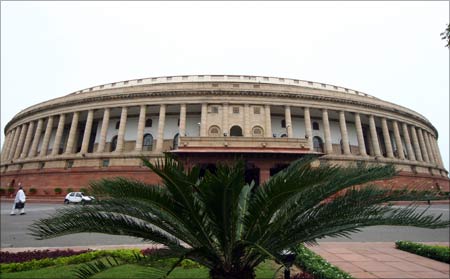
1. Improve governance
India's governance problems stem from the inability of the government and public institutions to deliver public services. Without better governance, delivery systems and effective implementation, India will find it difficult to educate its citizens, build infrastructure, increase agricultural productivity, and ensure that the fruits of economic growth are well-distributed.
The problem
Elements of reform
To resolve these issues, there has to be greater accountability of politicians to the citizens, unbundling of government's role as regulator and provider of services, autonomy for service providers, and greater ability of citizens to hold service providers to account for the services they deliver.
The Goldman report says that the elements of reform should comprise:

2. Raise basic educational achievement
Many international observers tend to see education as one of India's biggest advantages. This is because they tend to meet only the best and the brightest.
India has a large number of highly educated people. But it has a population of 1.1 billion and probably the highest absolute numbers anywhere globally receiving hardly any education.
Ultimately it will be the role of the government to ensure that India can raise educational standards. Without it, India will remain a country with potential.
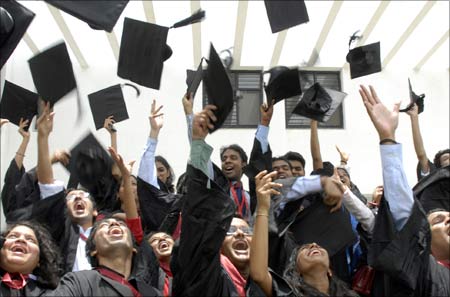
3. Increase quality and quantity of universities
There is also significant need for better higher education. The likely numbers seeking higher education can be expected to grow by three of four times by 2020 from the current number of around 10 million. The National Knowledge Commission has proposed an increase in the number of universities from 350 today to 1,500 by 2016.
In some parts of the world, there are fears of an Indian 'brain-takeover' due to the large number of Indian graduates. Many leading international financial firms and technology companies abound with Indian talent that has benefited from higher education. However, again this 'contradiction' also partly reflects numbers.
India's domestic needs are large. To emphasise the point once more, between 2000 and 2020, India's population is projected to grow by as much as the total current population of the US.
In order to achieve its ambition, India's leadership needs to have strong and imaginative goals. Given the incredible growth prospects for Indian higher education, leading foreign universities are eager to 'expand' into India, either by developing an Indian campus or tying up with local entities that already exist.
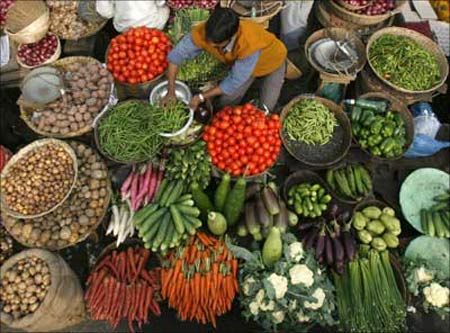
4. Control inflation: Try Inflation Targeting?
Inflation Targeting should become a centrepiece of a clearer, more defined and credible medium-term framework for macroeconomic stability. As part of this, Goldman Sachs recommends greater independence for the Reserve Bank of India and the abolishment of all FX controls.
The following is the response to the most frequent objections.
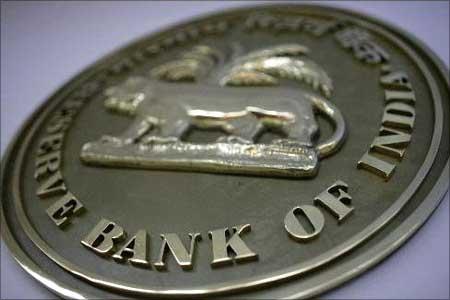
5. Introduce a credible fiscal policy: a medium-term strategy
India's gross fiscal deficit remains one of the highest in the world. The overall government deficit stood at just under 6% in fiscal year 2008. In fiscal year 2009, this may accelerate to above 7%, due to a large debt-waiver for farmers, a big wage hike for civil servants, increasing fertiliser and oil subsidies, and higher exemptions on income tax.
At such high levels, government borrowing crowds out private-sector credit, keeps interest rates high, adds to already high government debt, and becomes a key source of macro vulnerability.
A medium-term strategy for fiscal policy, which reduces the overall deficit to a sustainable level, is a must. Such a fiscal plan would provide several important benefits:
The basis of such a programme, however, has to be commitment by all political parties to improve the health of the government. It would require putting all off-budget subsidies on-budget so that citizens and Parliament can assess the true picture.

6. Liberalise financial markets
India's financial sector remains small and underdeveloped. To meet its growth potential, India needs to pursue financial reforms to channel savings effectively into investment, meet funding requirements for infrastructure and enhance financial stability. To develop India's capital markets, we think reforms need to proceed on several fronts.
India has thus far been able to sustain growth rates, without major reforms in its financial sector. As the development of the equity market has shown, if India were to reform other aspects of its financial sector, it could prove a big engine for growth, with large employment opportunities and efficiency improvements which would benefit the entire economy.

7. Increase trade with neighbours
In the past decade or so, Indian trade with the rest of the world has ballooned. Lower tariff barriers encouraged by Indian authorities have been key, as has booming world trade.
This impressive development needs to be kept in perspective, however, as it has come from an exceptionally low base. India currently accounts for no more than 1.5% of global trade. India's trade with China is rising sharply, and China now ties with the US as India's biggest trading partner.
Ambitious goals are needed
India has announced ambitious goals for its international trade: it aims to reach 5% of world trade by 2020, and for exports to rise to $200bn by 2008/09 (around $155bn in the latest year).

8. Increase agricultural productivity
Increasing agricultural growth is critical not only for India to sustain high growth rates, but also to move millions out of poverty. Currently, 60% of the labour force is employed in agriculture, which contributes less than 1% of overall growth.
The Goldman report says that there needs to be movement on three fronts for agricultural productivity to increase:
The recent increase in contract farming is encouraging. It allows greater investment, better technology, access to land and finance, a market focus in terms of crop selection, incentives to boost productivity.
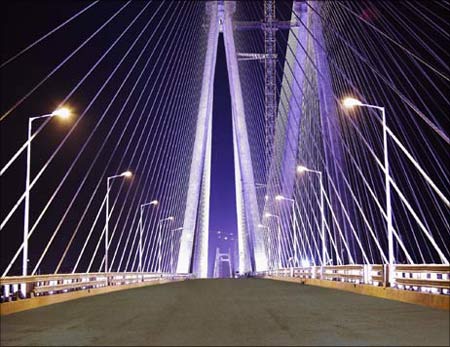
9. Improve infrastructure
India's constraints in infrastructure are obvious. The problems of clogged airports, poor roads, inadequate power, delays in ports have been well-recognised as impeding growth. Indian companies on average lose 30 days in obtaining an electricity connection, 15 days in clearing exports through customs, and lose 7% of the value of their sales due to power outages.
Incremental demand for infrastructure will continue to increase due to economic growth and urbanisation.
The problem
Elements of reform
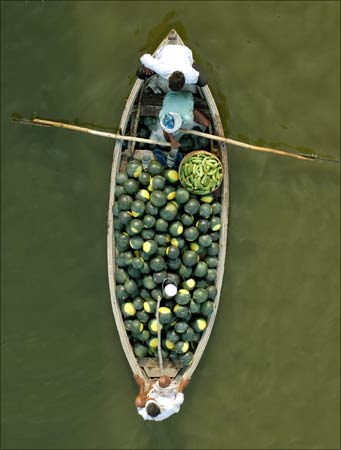
10. Improve environmental quality
India's high population density, extreme climate and economic dependence on its natural resource base make environmental sustainability critical in maintaining its development path. Environmental degradation affects the economy in several ways.
For India the impact would come from declining agricultural area and productivity due to soil erosion; reduced labour productivity from poor urban air quality, and the threat of toxic and chemical waste in the environment, among others.
For greater environmental sustainability, India must:
However, the Goldman Sachs Economic Research report laments that political commitment to a sustainable environment is still lukewarm. If not given the right priority, environmental sustainability has the potential to become India's greatest challenge.